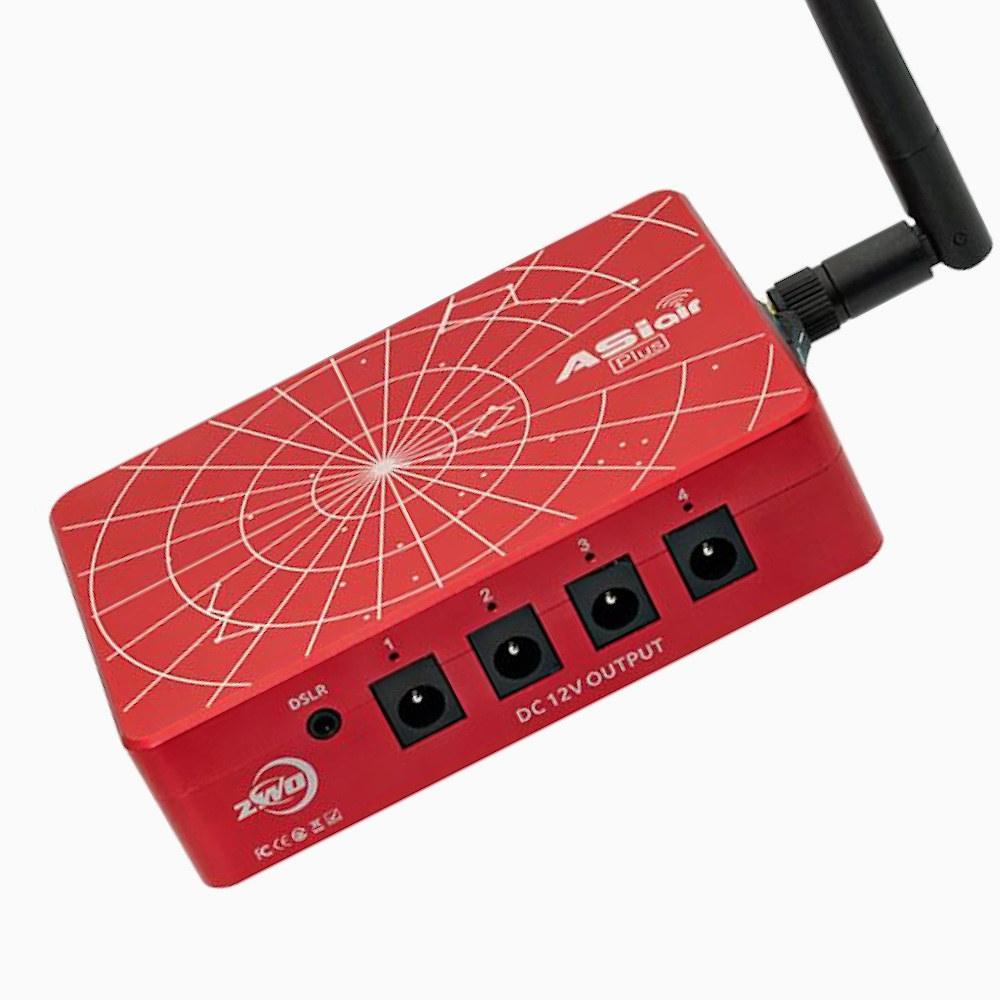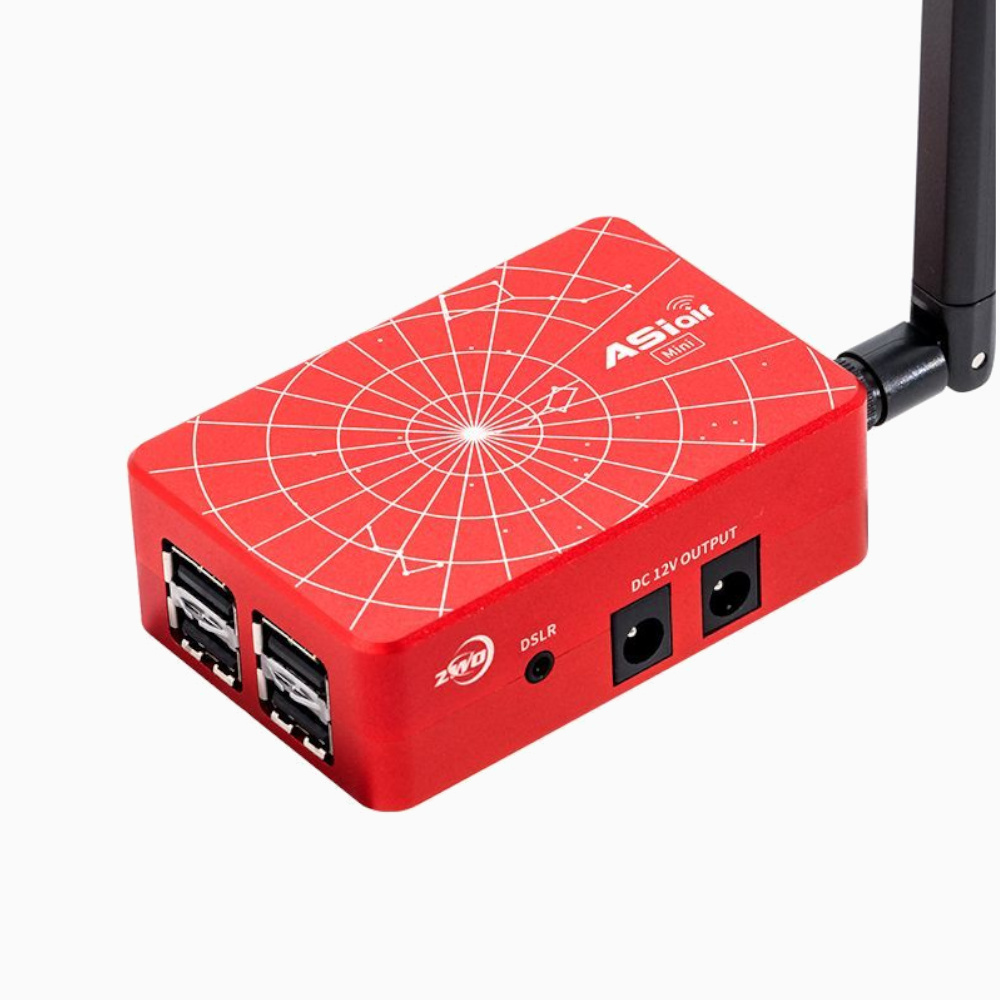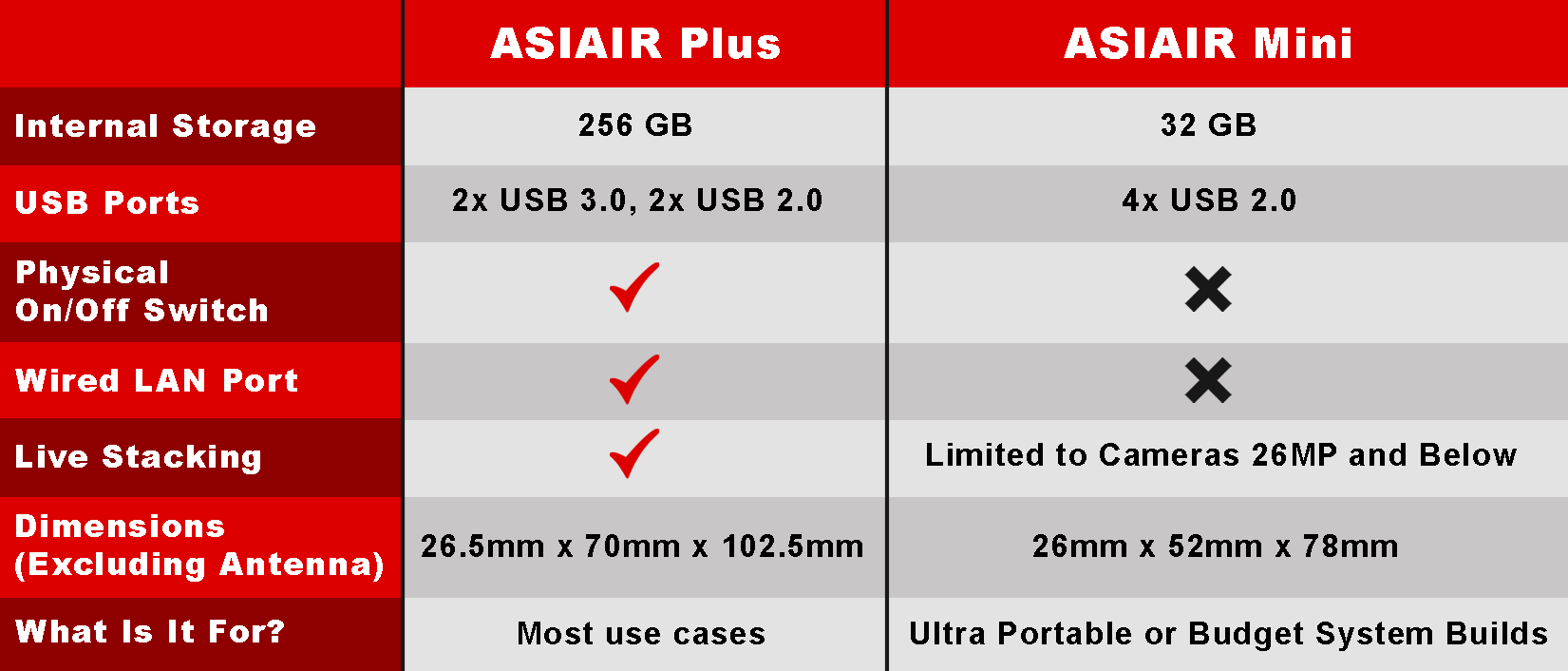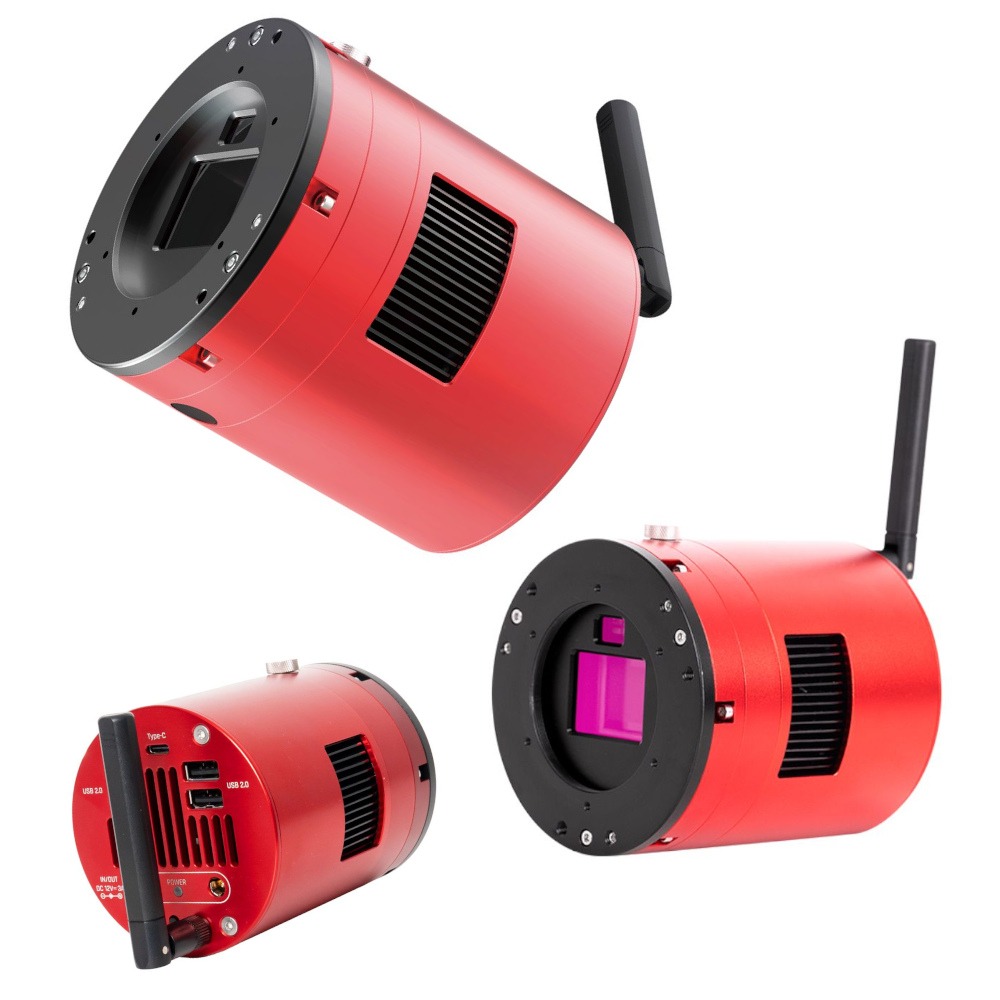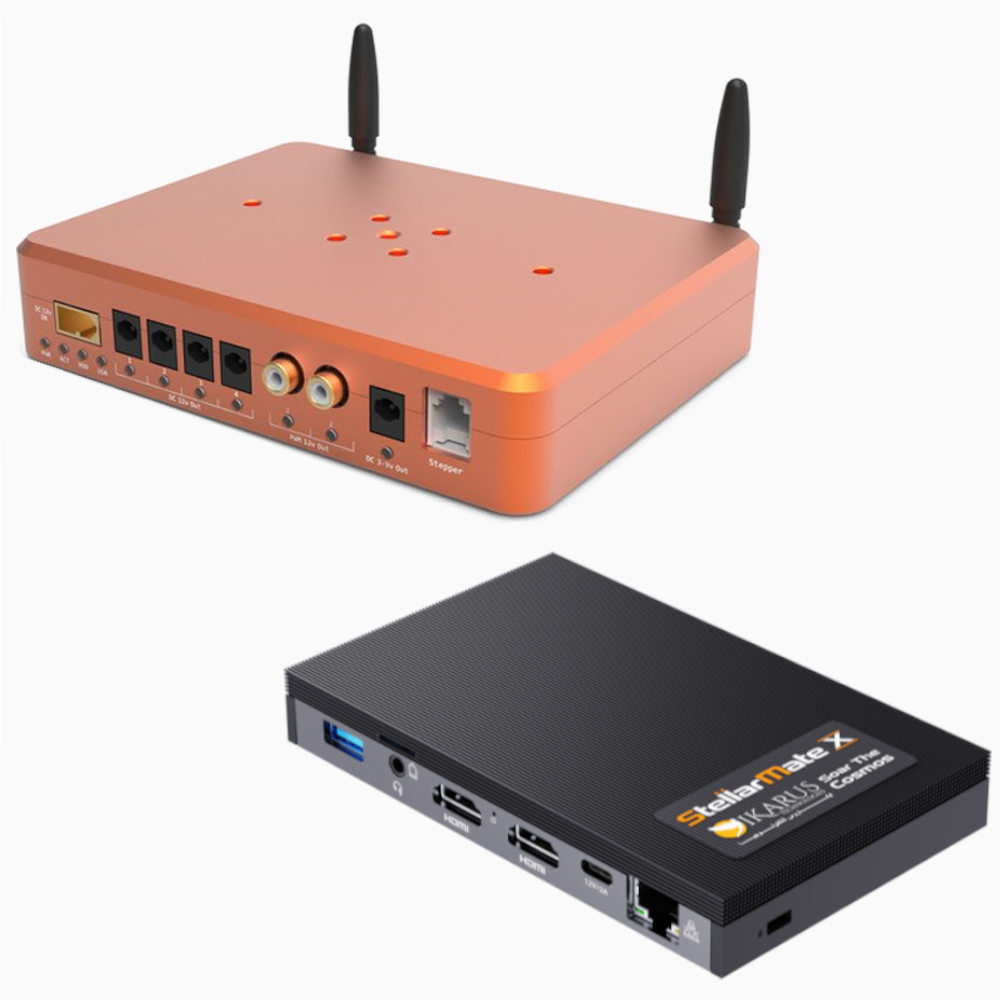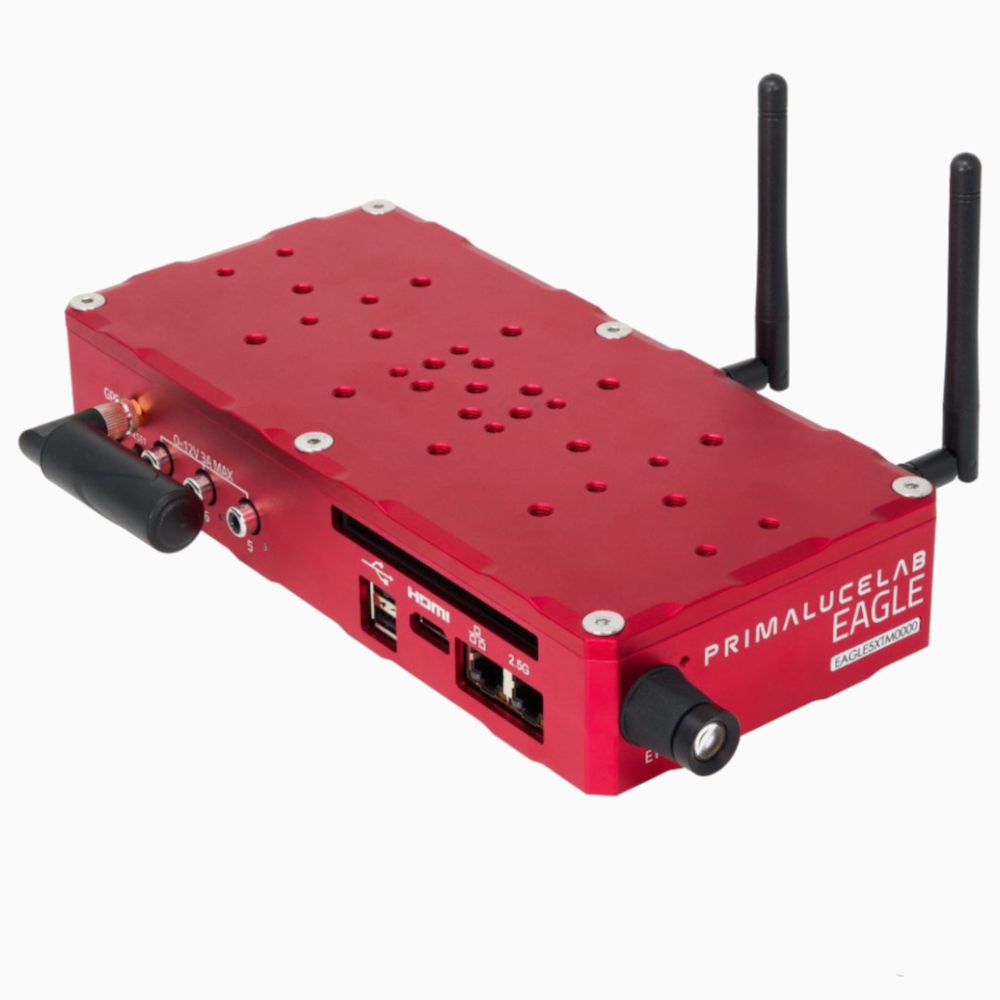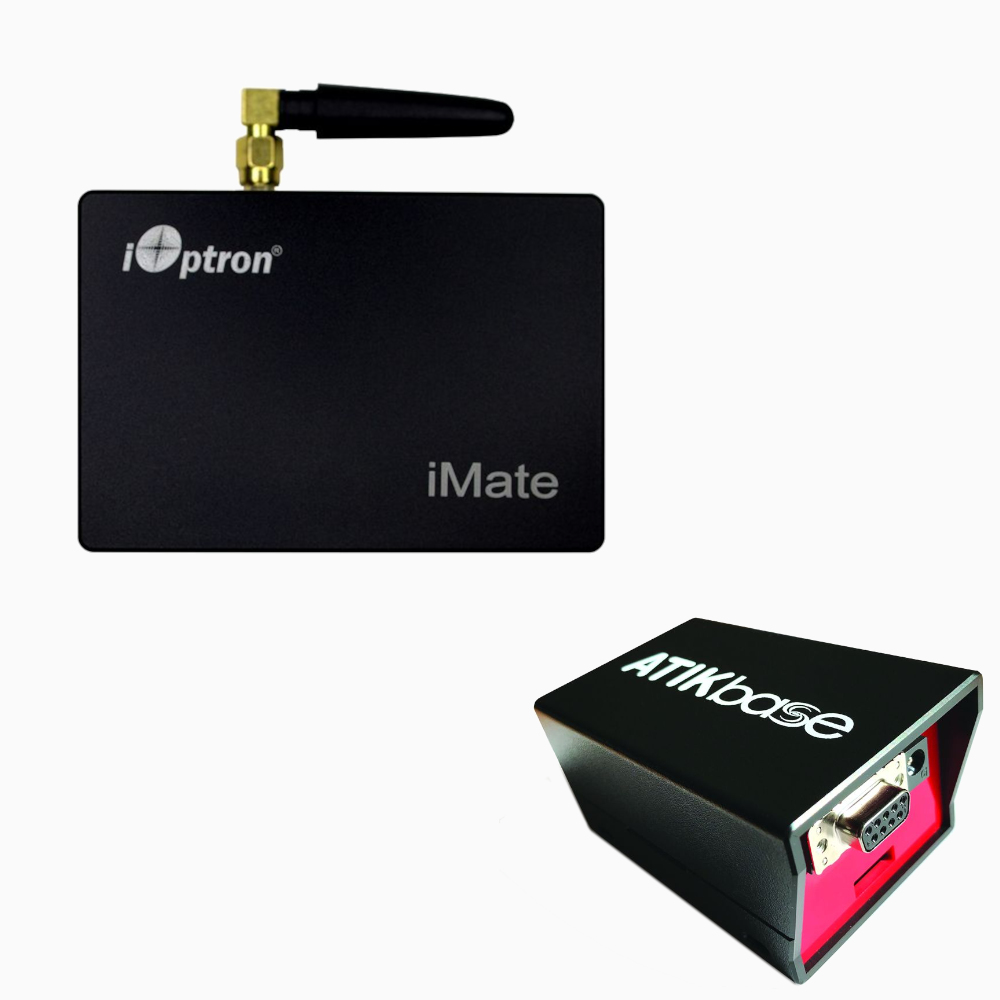Astronomy
Astronomy is the scientific study of space and the celestial objects within it. It also deals with the physical universe as a whole. Astronomy can be broken up into four subcategories: astrophysics, astrometry, astrogeology, and astrobiology. The study of astronomy has helped measure time, seasons, and navigation on Earth.
Astrophotography
This refers to photography of astronomical bodies and phenomena. Astrophotography is not new, for example the popular T threading still used today harkens from Tamron’s T-mount developed for their 35 mm cameras - however it has seen a notable increase in popularity with improvements in cameras, mounts, filters, and software making astrophotography much more accessible. This is not limited to celestial bodies such as nebulae, planets, or galaxies either, as solar imaging is now more within the reach of the average consumer than ever before.
Autoguiding
Autoguiding is a process which utilizes a smaller telescope, referred to as a guide scope, and an additional camera sensor, known as a guide camera, to assist your mount in its tracking precision. Alternatively, this can be achieved using an Off-Axis Guider (OAG), which is fitted within your primary imaging train. An OAG uses the light captured by your telescope and sends it to your guide camera via an internal prism. So, how does autoguiding actually work? Your guide camera will take a constant series of short exposures (typically 1-3 seconds each) that will then be analyzed by software. After the software selects the best guide star(s) to guide upon, the goal is to keep these stars as steady as possible from frame to frame. If there is a discrepancy in the positioning of the stars, the guiding software will communicate with the mount to make small adjustments to fix these tracking errors. While it may not be necessary for short exposure astrophotography such as planetary, lunar, or solar, autoguiding is highly beneficial for long exposure astrophotography.
Bluetooth
Bluetooth devices contain certain hardware that allows transmission of data via an antenna. The discoverable device sends out signals that are then detected by the receiving device, and their connection allows a transfer of information. This association between devices is called a piconet, where short radio waves are communicated back and forth.
Dedicated Astronomy Camera
These cameras don’t look like what one traditionally thinks of when imaging a camera; instead taking the form of cylinders or pucks, with no physical controls, displays, or viewfinders to speak of. These require a computer or WiFi control device to take images, with more advanced models additionally requiring external power. What they give in return for all of these concessions is granular control over the sensor settings, increased sensitivity to wavelengths that more traditional cameras filter out, options for deBayered sensors (true monochrome), designs that easily connect with astronomy equipment, and in some cases cooling for increased performance.
Electronic Focuser (EF)
A device that replaces, or in some cases compliments, the stock focusing knob or mechanism with precise electronic motor. This motor can in some cases be controlled manually with a hand controller or buttons on the device, which can help prevent disturbing the users view when focusing; but more commonly these devices are now used to either focus the optics when the user is not present, automate focus when used in concert with a separate camera and software, or both.
Equatorial Mount
An equatorial mount is an astronomy instrument that features two axes of rotation: right ascension (RA) and declination (DEC). Equatorial mounts also feature an additional axis, called the polar axis, that these RA and DEC axes rotate about. This polar axis is to be lined up with Earth’s celestial pole to accurately counteract Earth’s rotation. These mounts are ideal for astrophotography applications, as the addition of a polar axis eliminates the issue of field rotation within captured images.
Filter Wheel
A device that is integrated into the imaging train to automate filter changes. These use a carousel (the wheel) that rotates filters into place, allowing users to easily create LRGB, SHO, or other color pallet images with monochrome cameras; or simply use different contrast and light pollution filters with a color camera.
German Equatorial Mount
A German equatorial mount is a specific type of equatorial mount created by Joseph von Fraunhofer in 1824. These mounts feature a design that places the telescope on one side of the declination axis, which is offset by counterweight(s) on the opposite end. The declination and right ascension axes meet each other within a T-joint. This T-joint is aimed at the north or south celestial pole, parallel to Earth’s axis of rotation, and rotates about this polar axis. With these three axes, these mounts are popular within the astrophotography community due to their ability to counteract Earth’s rotation without presenting field rotation within the captured images.
GoTo (Go-To) Technology
In simple terms, Go-To technology is a telescope mount’s ability to slew to an object in space. This process requires alignment with the night sky, and is achieved through correlation with the optics of the telescope and software. Alignment can be achieved a number of ways and is necessary in order to determine the pointing position of the telescope. The user can either calibrate their telescope with 1-3 well-known bright stars or planets, or can utilize plate solving if their software offers it. In plate solving, the field of view is compared to a database, and the software can then determine the exact positioning of the telescope. Plate solving is considered more accurate than star alignment, and is widely featured within the smart telescopes on the market today for accurate Go-To functionality.
GPS
Originally invented by the U.S. Department of Defense, this technology became fully functional in the United States in 1995. This radio navigation system utilizes satellites to provide the precise global position of GPS enabled devices. Out of the 31 GPS satellites orbiting Earth today, GPS receivers only need information from 4 GPS satellites to determine accurate location. Cell phones, computers, and endless other devices act as GPS receivers. GPS is helpful in astronomy and astrophotography by providing the imaging software with the correct time, date, and location, helping create a detailed image of what the sky should look like based on this information.
Guide Camera
A guide camera has the important job of assisting your mount with its tracking capabilities. It does this by capturing constant frames of the night sky, usually 1-3 seconds each, that are then sent to autoguiding software. The software analyzes the field of view, selects guide stars and determines their center of mass, then compares each incoming frame to this calculated center of mass. If any discrepancies are found between the captured frames, the software will then communicate with the mount to fix these errors.
Image Capture Software
Astrophotography image capture software are specialized pieces of software designed to operate your astrophotography equipment. There are plenty of options available, though some of the most popular ones are N.I.N.A, Astro Photography Tool, Sequence Generator Pro, and SharpCap, just to name a few. These applications have been designed to provide seamless imaging sessions, allowing extensive opportunities such as target selection, target framing, plate solving, autoguiding, image acquisition, camera cooling, automation, and plenty more.
Live Stacking
A process in which image stacking is done in real-time as images are captured, instead of after imaging has concluded. Most live stacking programs or features will allow users to apply calibration frames captured ahead of the main image capture sequence, allowing users to see an astrophotograph develop before their eyes.
Off-axis Guider (OAG)
As opposed to using a guide scope, off-axis guiders are fitted into the main imaging train itself, and utilizes the incoming light from the primary telescope for guiding. It achieves this via an internal prism that sends light into the guide camera. When using traditional guide scopes, these scopes can alter in position slightly through the night of imaging, causing the issue of differential flexure. But utilizing the main imaging rig’s incoming light, off-axis guiders eliminate this issue.
Operating System (OS)
The base system that all other software is built on top of. Common examples of computer operating systems would be Windows, Mac OS X, and Linux (Ubuntu, Debian, etc.); while mobile devices commonly use Android or iOS/iPadOS. While technically there are caveats and workarounds, for the most part software is operating system specific, hence this can be an important consideration when buying a WiFi camera control system, laptop, or mini PC. In the astronomy community Windows currently has the largest amount of software support, though advances are being made for Linux with things like the ASCOM equivalent INDI system.
Plate Solving
The process of plate solving involves software analyzing a captured frame and comparing the star patterns to a database to determine the exact pointing position of the telescope. This procedure is incredibly helpful in Go-To processes, allowing the user to slew directly to the desired object with the click of a button.
Polar Alignment
Polar alignment is the process of aligning a telescope mount’s polar axis with the Earth’s axis of rotation. By having these two axes parallel to one another, precise counteraction of the Earth’s rotation can then be achieved. While a typical process of equatorial mounts that have three inherent axes of rotation, a similar effect can also be achieved by utilizing an equatorial wedge with two-axis alt-azimuth mounts.
Post-Processing
In order to complete an astroimage, it’s necessary to bring the captured frames into software to perform post process editing. This action varies for different types of astrophotography, though in general, it involves image stacking to reduce noise and remove artifacts, and image editing to enhance the captured detail and color.
RCA Port
Usually used to transmit audio or legacy video signals, this connector is used in the astronomy hobby to transmit power. Though currently 5.5x2.1 mm is much more common for power, this connector is still used with dew heater bands.
Sky Atlas
Sky Atlas is a digital planetarium created by ZWO for their ASIAIR and Seestar platforms. Digital planetariums are representations of the night sky as it appears at a certain time and location, generally synchronized to those of the user. This allows users to look for objects to observe/ image, usually showing a visual representation and technical information about the targets. In more advanced planetariums like the Sky Atlas and those included in most other smart telescope apps, GoTo functionality will be included to slew the user's telescope to whichever section of the sky they desire.
Software
Software consists of programs and date used by a computer to complete certain tasks.
Stacking
A method used to bring out what would otherwise be faint or invisible detail and contrast in an astrophotography image. When imaging a target, the longer an exposure is, generally the more faint detail will become visible. However as exposure time becomes longer several complications emerge - motion blur due to compounding small deviations or errors in tracking, increased sensor noise and glow, and overexposure of the bright areas of an image. Stacking mitigates these issues by combining a number of shorter exposure images, commonly called sub exposures, sub frames, or simply “subs”, into one image that effectively has a longer exposure time. The stacking process can further improve the resulting image with the use of calibration frames that help identify and compensate for visual artifacts introduced by the optics or sensor itself.
Tracking
As the Earth is continuously spinning and in motion, the location of a celestial object in the sky moves over the course of a night. This becomes apparent during observation as a target moves out of view, and particularly observable in images as stars and objects quickly become a blur as exposure time and focal length increases. To compensate for this, computerized mounts and smart telescopes employ tracking techniques to keep the target centered in the optics. Depending on the motion style of the mount, the resulting image can vary. Alt-Az motion, popular in smart telescopes, keeps the object centered but can not compensate for its “spin” without what is known as a wedge. Accordingly these images lose information on the edges of the frame as they rotate out of view, leading to ever smaller, circular, images as time spent imaging increases.
USB
Universal Serial Bus or USB is a protocol for data transmission, and is by far and away the most common way astronomy equipment will communicate with a PC in a wired capacity. There are a number of USB connectors, such as USB-A (the rectangular port you’re likely familiar with), USB-B, USB-C, and micro USB; as well as a number of different revisions (2.0, 3.0, 3.1, etc.) that have brought more speed, power, and reliability to the protocol.
WiFi (Wi-Fi)
Wi-Fi, sometimes shortened to just WiFi or wifi, is a protocol for wireless communication. Primarily it is used to transmit and receive data between a device (such as a smartphone, computer, smart TV, and an ever increasing number of other household devices) and a router or wireless access point that is connected to the internet. Communication with the internet is not the only function the Wi-Fi protocol is useful for, and indeed many of the aforementioned devices can communicate with each other locally using this protocol and the router as an intermediary. Increasingly this protocol has been used for more direct communication between two devices (like a smartphone and a smart telescope), with one creating its own access point or broadcast that both devices then send and receive data on. While this does have the disadvantage of disconnecting a device’s connection to the internet, it has become necessary to transfer large amounts of data quickly that otherwise exceed what Bluetooth can accommodate.
WiFi Hotspot
A method of establishing a connection between two devices, for example a mount or a WiFi camera control system and a PC/ mobile device. In this instance the host device (WiFi camera controller, mount, etc.) creates and broadcasts its own WiFi network, that another (PC or mobile device) connects to. From here the devices can communicate similarly to how a WiFi printer and PC connected to the same network do. This has the advantage of providing a high-speed connection, at the cost of disconnecting the connecting device from other local networks (and therefor, the Internet).
